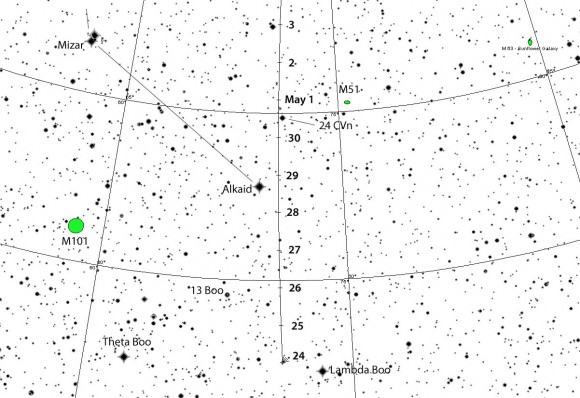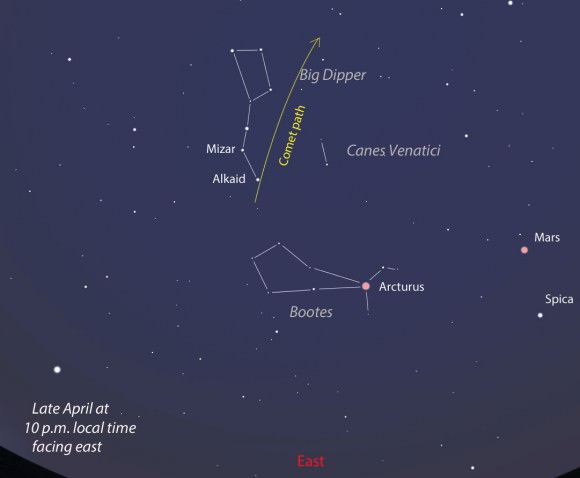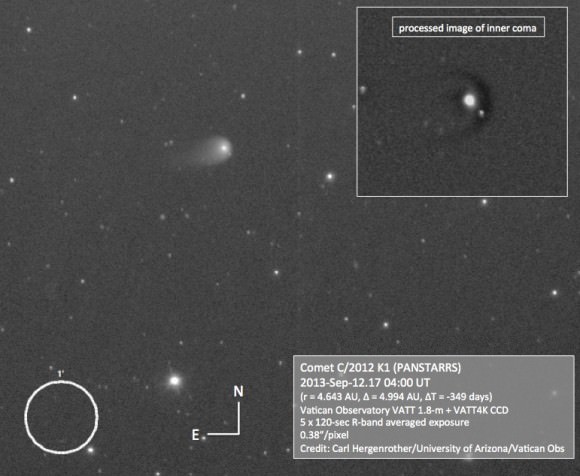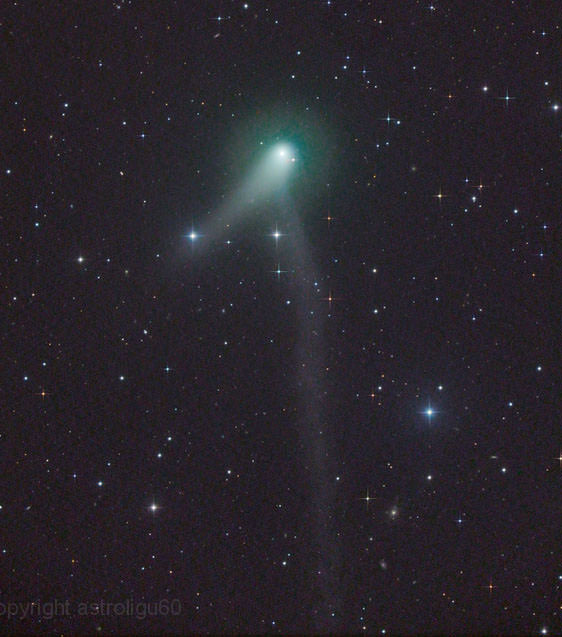Comets often play hard to get. That’s why we enjoy those rare opportunities when they pass close to naked eye stars. For a change, they’re easy to find! That’s exactly what happens in the coming nights when the moderately bright comet C/2012 K1 PANSTARRS slides past the end of the Big Dipper’s handle. I hope Rolando Ligustri’s beautiful photo, above, entices you roll out your telescope for a look.

If you’ve put off viewing this fuzzball because it’s been lost in the wilds of northern Bootes too long, hesitate no more. I saw it several nights ago through a 15-inch (37-cm) scope and can report a teardrop-shaped coma with a bright, not-quite-stellar nucleus. The comet sports an 8 arc minute long faint tail (1/4 the diameter of the full moon) and glows around magnitude 9-9.5. Granted I observed from dark skies, but K1 PANSTARRS could even be seen faintly in the 10×50 finderscope, putting it within range of ordinary binoculars.

Ligustri’s photo shows both gas and dust tails, but most observers will probably pick up the dust tail and strain to see the other. The comet has been moving north and slowly waxing in brightness all winter and spring. Right now, it’s ideally placed for viewing in the early evening sky and remains up all night for northern hemisphere observers. On Monday and Tuesday April 28-29 it’s within 1 degree of Alkaid, the bright star at the end of the Dipper’s handle.

In a 6-inch (15-cm) scope, expect to see a faint puff with a brighter core; observers with 8-inch and larger telescopes will more easily see the tail. K1 PANSTARRS continues to brighten through the spring and summer as it saunters from the Great Bear into Leo. In late July it will be too near the sun to view but re-emerge a month later in Hydra in the morning sky. Southern hemisphere skywatchers will be favored during the fall and early winter, though the comet will continue to hover very low in the southern morning sky for northerners. Predictions call for the PANSTARRS to reach peak brightness around magnitude +6 to +7 in mid-October.
Sounds like old C/2012 K1 will be around a good, long time. Why not get acquainted?


oTay then… I am on the prowl for comet number 49! A new moon helps, but the cloud cover has not been exactly co-operating. Maybe tonight?